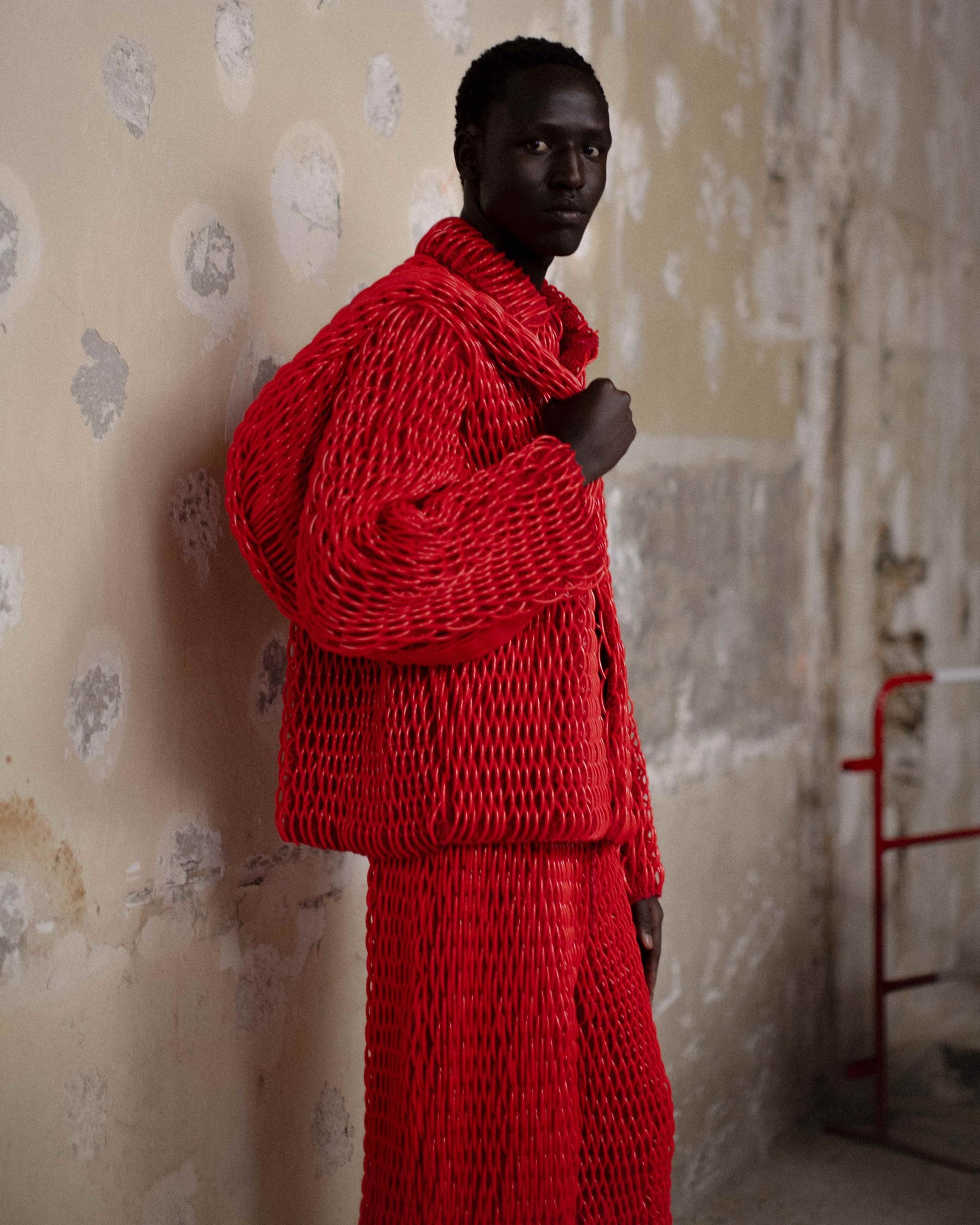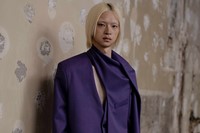Botter’s Spring/Summer 2024 show was all about vodou. To the uninitiated, the word (sometimes confused with ‘voodoo’) might conjure up images of someone sticking pins into a doll to magically induce pain in a real-life human; a common horror film trope. That, however, was not the kind of vodou Rushemy Botter and Lisi Herrebrugh had in mind while designing their new collection. The vodou in question here was a centuries-old Haitian religion, which the pair describe as a worldview where “everything within the universe affects everything else.” The collection, titled Vodun, honed in on the interconnectedness of the living, the dead, the Earth, the land, and bodies of water all over the globe. “Over the years there’s been a lot of different views on vodou; that’s it’s a bad thing, that it’s black magic,” says Herrebrugh backstage after the show, cradling her and Botter’s two-year old on her hip (the pair are partners in both life and work). “But really, what vodou was all about is the unity of people, of the world, of the harmony and the rhythm that could be restored through vodou.”
Since debuting their first collection in 2017, Botter and Herrebrugh have made a splash in menswear with their conceptual tailoring in rich colours, and playful, sea-inspired designs that aim to raise awareness around ocean pollution (for S/S23, models’ hands were submerged in condoms filled with water – the effect was like water balloons). Self-proclaimed creators of “Caribbean couture” – Botter was born on the Caribbean island of Curaçao and spent much of his life in a fisher’s village near Amsterdam – the duo’s sustainable thrust goes much further than just using upcycled materials like ocean waste. In 2020, they launched the Botter Coral Nursery, an organisation that works to revive the coral reef in the Caribbean sea of Curaçao. The pair first met in Antwerp – Botter studied at the Royal Academy, and was mentored by Walter Van Beirendonck and Dirk Van Saene – and that Belgian influence is still present in the brand’s razor-sharp, conceptual takes on tailoring. In 2018, after becoming finalists for the LVMH Prize, the pair were appointed as artistic directors of Nina Ricci, but they left in 2022 to devote all their attention to Botter, which they said was “now entering exciting times and which we want to take to yet another level.”
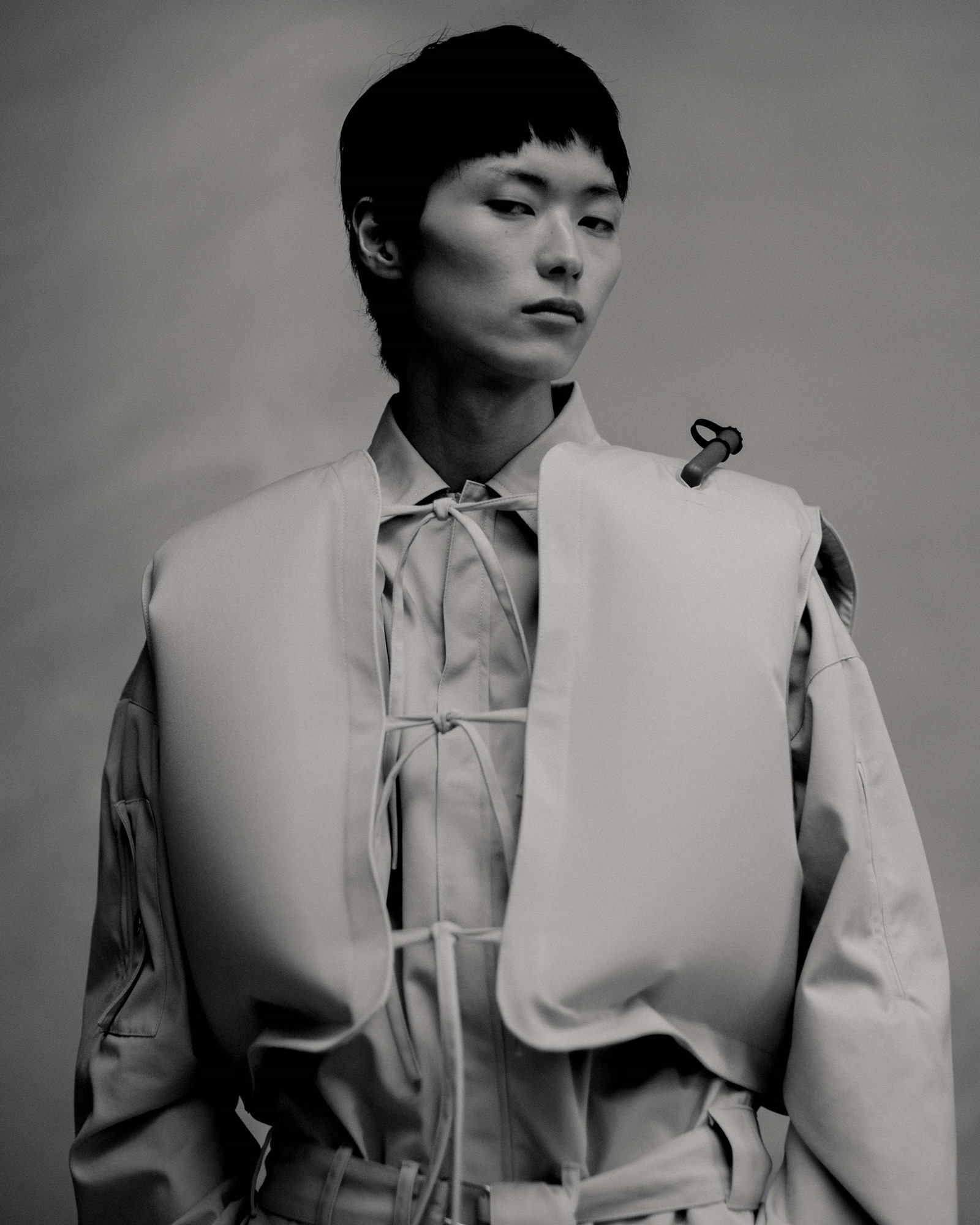
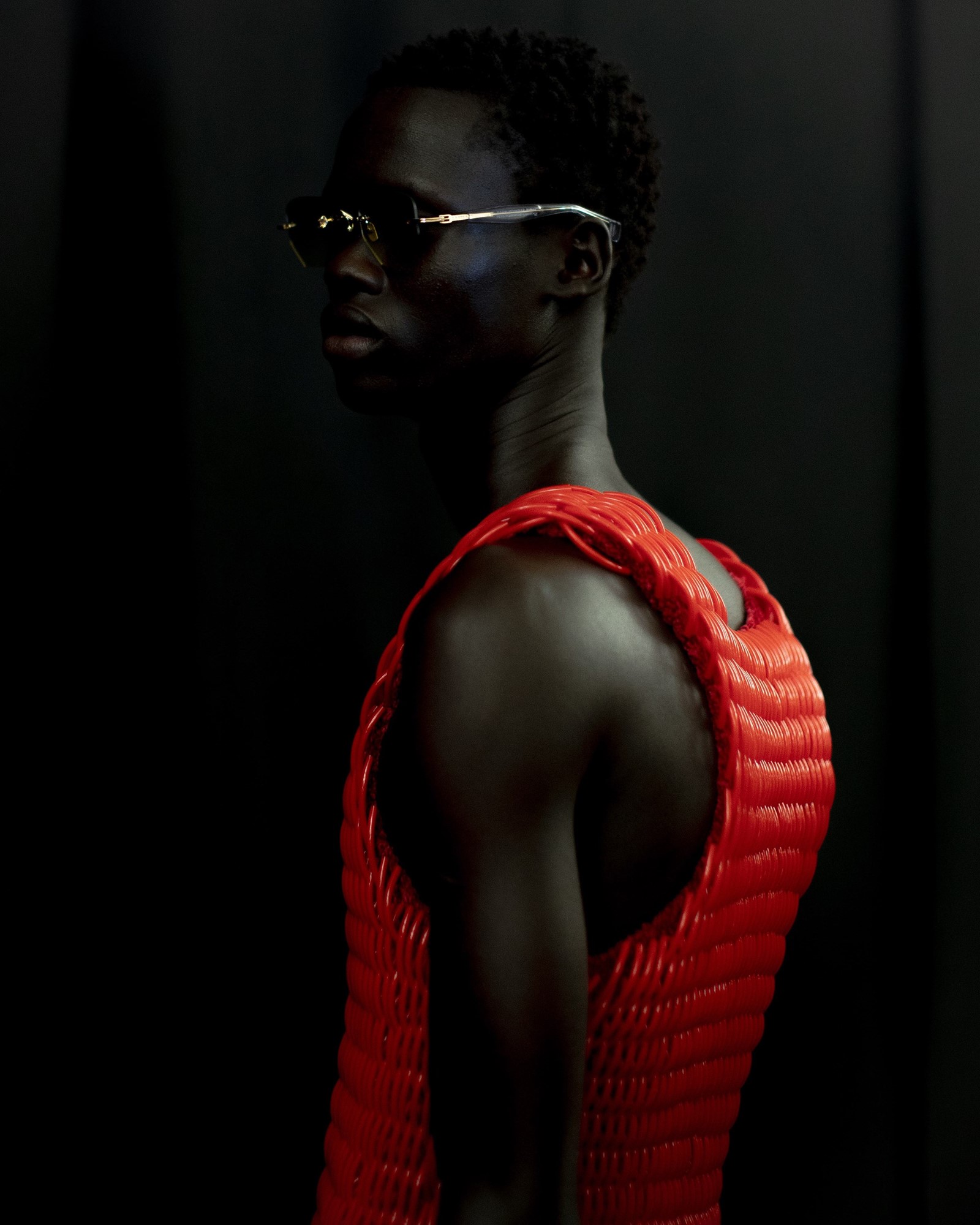
On the day of the S/S24 show, under the sweltering glass roof of a dilapidated venue in Paris’ Pigalle, many guests arrived wearing those skew whiff suits in dusty oranges, aquamarine blues, and mossy greens – pecs exposed in sharp V-necks – that made the brand famous. Set to the sombre sound of Michael Andrews’s Mad World, the new collection’s sense of colour, as always, was overpowering; there were deconstructed suits in lavender and test tube green, and desperately tactile vests, suits and bags made out of upcycled scoubidou weave in plasticky red and blue hues. The idea of nature and its conservation manifested itself through semi-sheer printed floral shirts, tied up delicately in bows, a furry brown plunging waistcoat with a bushy, skunk-like trail of white fur sprouting on the wearer’s back, and leaf-shaped leather bags held underarm. Cartoonishly puffed-up sliders made in collaboration with Reebok evoked the hypnotic ridges of Murex shells, created using cutting-edge 3D printing technology. And one buoyant waistcoat, made in the image of a life jacket, felt like a nod to the ongoing migrant crisis, and the ways in which the sea can aid escape.
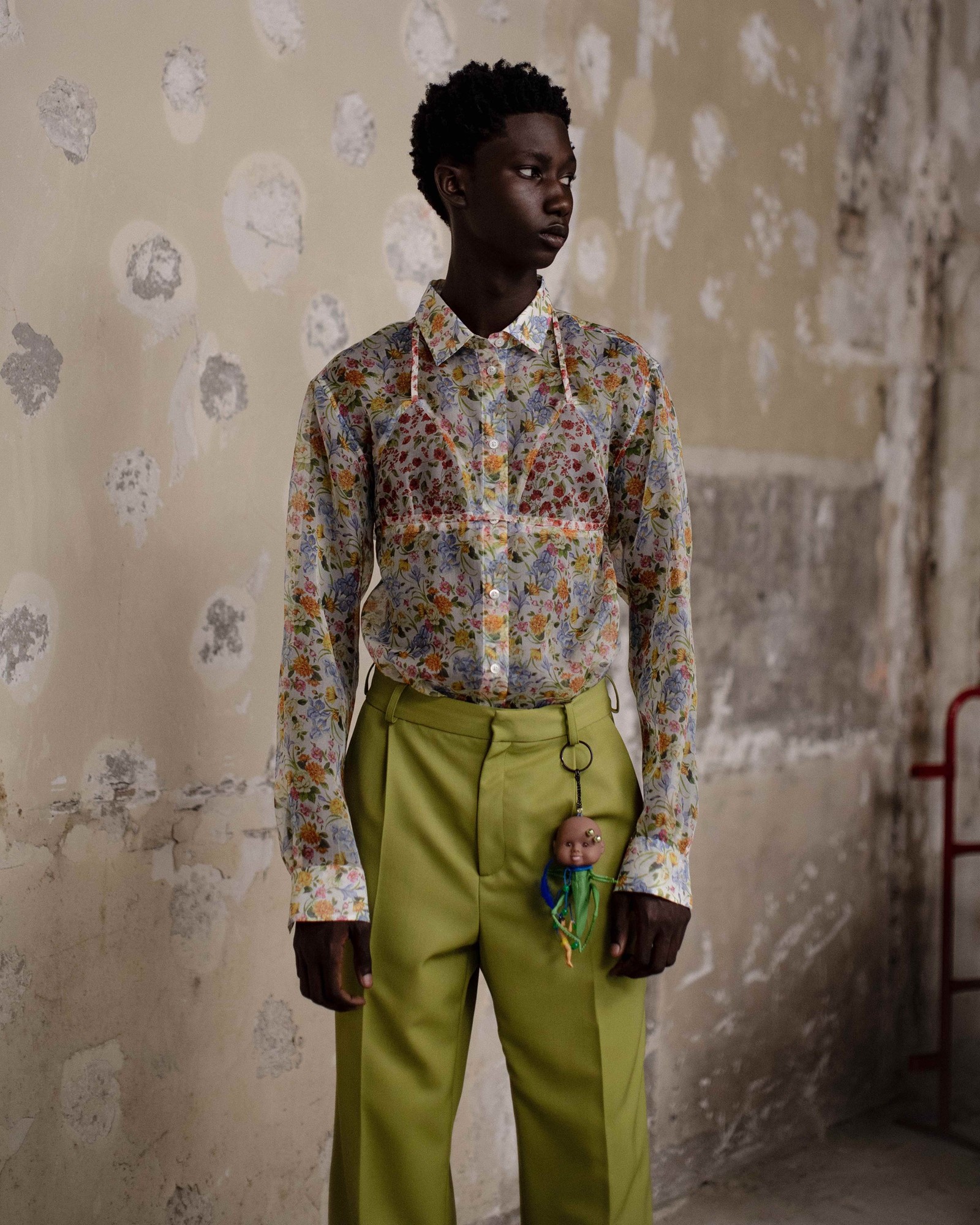
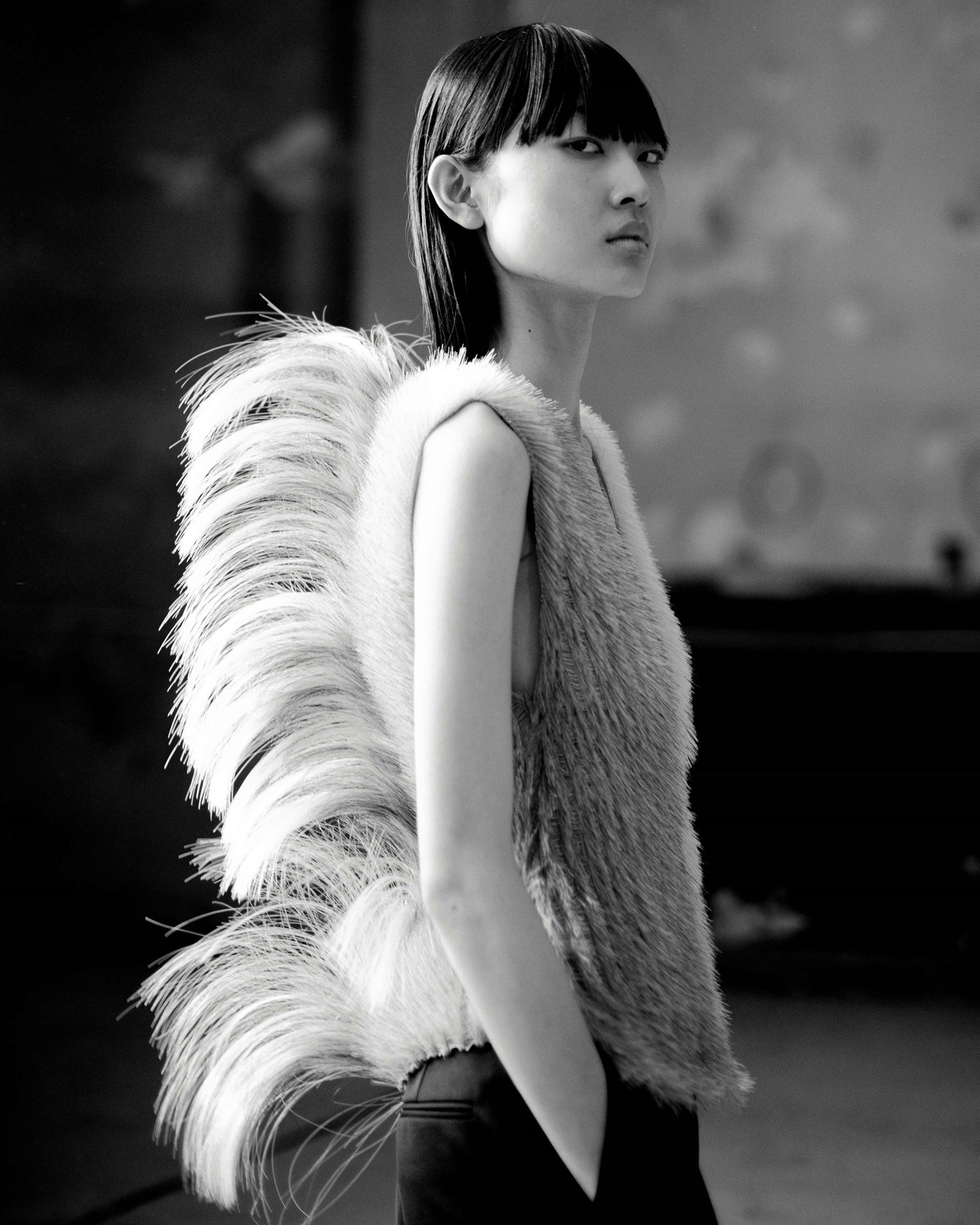
The biggest highlight of all, though, came with the miniature plastic toys and dolls adorning the clothes in inventive ways. As a winking joke to the true meaning of vodou, perhaps, guests’ seats were laid with black shoe boxes with keychain dolls inside, wrapped up in azure blue tissue paper. Created by Belgian artist Daniel von Weinberger in response to the idea of vodou rituals, the dolls’ Barbie heads were nightmarishly skewed onto dinosaur bodies. “We were thinking of how children can tear apart toys and put them back together,” Herrebrugh says, gesturing to the influence of her young child, Scully. In the collection itself, low-slung belts and necklaces made from mishmashes of brightly coloured plastic toys looked like clusters of trash washed up on a beach shore, but beautiful. One belt, featuring a ring of toy hands, harked back to the tiny toy hand craze that swept social media years ago.
What do the pair hope we can learn from the concept of vodou embedded in this collection? “I’m really feeling that we need connection,” says Herrebrugh, referencing the team effort that was needed to do the show. “I think it’s more important now than ever to realise that everything is connected, and get that individualistic mindset out of our system. We all need each other.”
